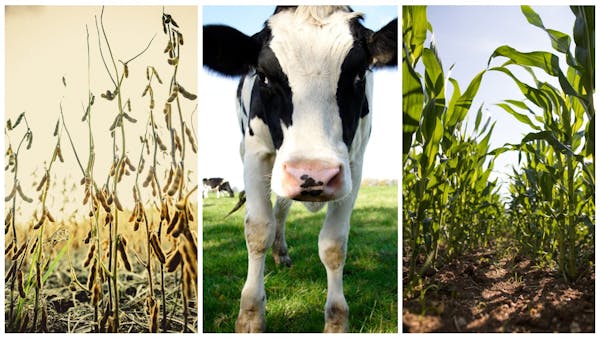The Star Tribune's Nov. 26 article, "Farm bankruptcies are on the rise, and bankers worry that far more are on the way," highlighted problems facing agricultural producers, with many sectors facing multiyear lows for commodities such as corn and soybeans.
Whatever the cause — overproduction, shifting consumer preferences, retaliatory tariffs — by some measures, farmers are into their fourth year of low commodity prices, with prices so low they are below break-even on production costs.
So far, producers have by and large managed to continue operating because lenders have been willing to provide working capital loans to them each year. But recent increases in the number of bankruptcy filings and foreclosures suggest we may be reaching the end of the line for easy fixes, such as the "pretend and extend" of existing loans. It is time to consider other options.
Over the past 30-plus years, I've worked with borrowers and lenders across many industries facing tough times. When faced with tough financial situations, we've learned that it's helpful for borrowers to understand why lenders may be unable to simply renew an existing loan or make new loans and think creatively about new solutions.
Understand the problem from the lender's perspective. Many lenders, such as commercial banks, are highly regulated in terms of their lending capacity and requirements.
Banks are subject to regular audits by state or federal regulators who are checking on the loans of the bank to make sure the loans do not pose an undue risk that might lead to the failure of the bank. This means that banks are required by regulators to make loans that are adequately collateralized to borrowers who have the capacity to repay the loan.
Even less regulated nonbank lenders seek to avoid making loans where there is a significant risk of default. Therefore any lender wants to be assured that there is adequate capacity to repay a loan, or if there is a default, adequate collateral in the event of foreclosure. When a commercial bank is facing problem loans, borrowers must expect the lending relationship to change.
Confront issues and questions head on — and on time. Both producers and their lenders need to deal with the facts, good or bad. If a farmer expects to generate operating losses, he or she should discuss that problem with the lender and have a realistic solution to propose before it becomes a bigger problem.
And farmers have to be prepared to explain what is generating the losses and what could be done differently to minimize losses going forward. This requires getting into the lender's shoes by demonstrating a grasp of the problem and ensuring any solution is realistic and doable. For example, if the solution to this year's loss is to sell more commodities next year at the same low price, a lender may push back on that plan.
Be honest in dealing with problems, and get promises in writing. A corollary to confronting bad news is being honest in dealing with the lender. It never pays to inflate the value of assets on financial statements or guess at the amount of grain on hand.
Conversely, borrowers have a right to be dealt with honestly by their lender. We often hear from producers that their lender made specific promises to them and later reneged on that promise, or there is a dispute about what was discussed.
Many states, including Minnesota, have enacted laws that prevent oral agreements regarding a loan to be enforceable. Therefore, it is best to get any material promises in writing.
Know your rights. The fine print of many lending agreements contains terms on what happens if a loan goes into default, matures or how the lender may realize on any collateral by foreclosing.
It's important to have all of the related lending documents, which can be obtained by the lender. In addition to the lending agreements, state laws (such as the Minnesota Farmer-Lender Mediation Act) affect the process and timing of any foreclosure efforts by the lender and give the borrower additional protections.
Bankruptcy laws give borrowers additional rights to restructure their debts and reorganize their operations, even over the objection of the lender. Understanding how these processes play out and what alternative remedies are available is important to the success of any negotiations with the lender.
Have a realistic backup plan. Consider other options if a lender cannot or will not continue to lend. Are there other sources of lending, such as input suppliers or commodity buyers? Is it possible to downsize the operation? Can operations be diversified into areas that are more profitable? Are there nonfarm assets that could be used to subsidize the farm operation? Do this early.
Consult with experts. Ag producers cannot be expected to be experts on how to deal with troubled loans. After all, their expertise is related to farming.
However, when a farming operation is in distress, it's time to talk with lawyers, accountants or business people who have expertise in negotiating troubled loans, workouts, bankruptcy and navigating loan enforcement. This does not have to be costly or time consuming.
Most reputable experts will be willing to consult and provide affordable options for providing assistance, and many do not charge for an initial consultation. At the very least it's critical to talk with a trusted financial adviser on how to confront problems with lenders.
Clint Cutler was raised on a farm in Iowa. He is a shareholder of and former chair of Fredrikson & Byron's Bankruptcy, Restructuring & Workouts Group, practicing in the areas of debtor/creditor law, bankruptcy and complex commercial litigation. He can be reached at ccutler@fredlaw.com

